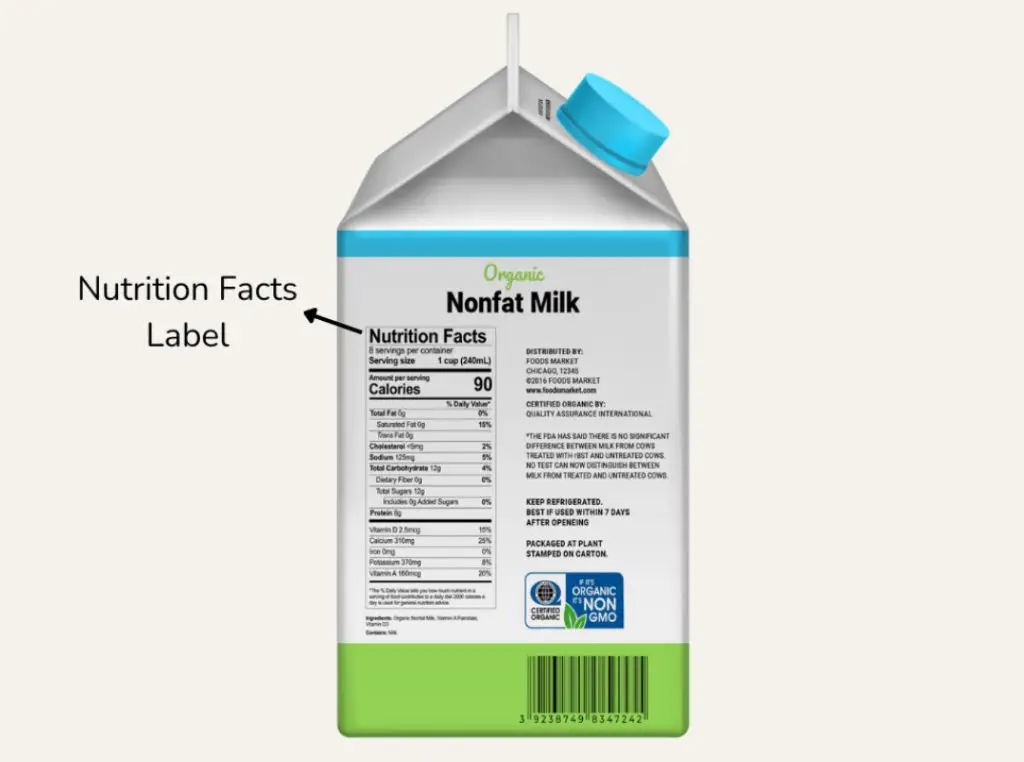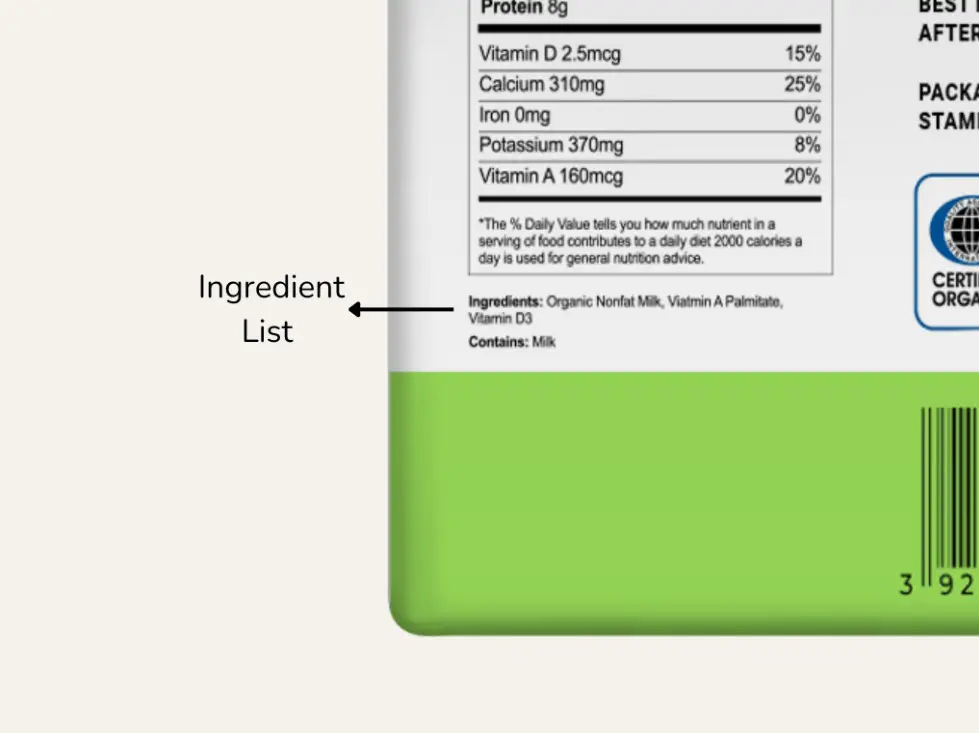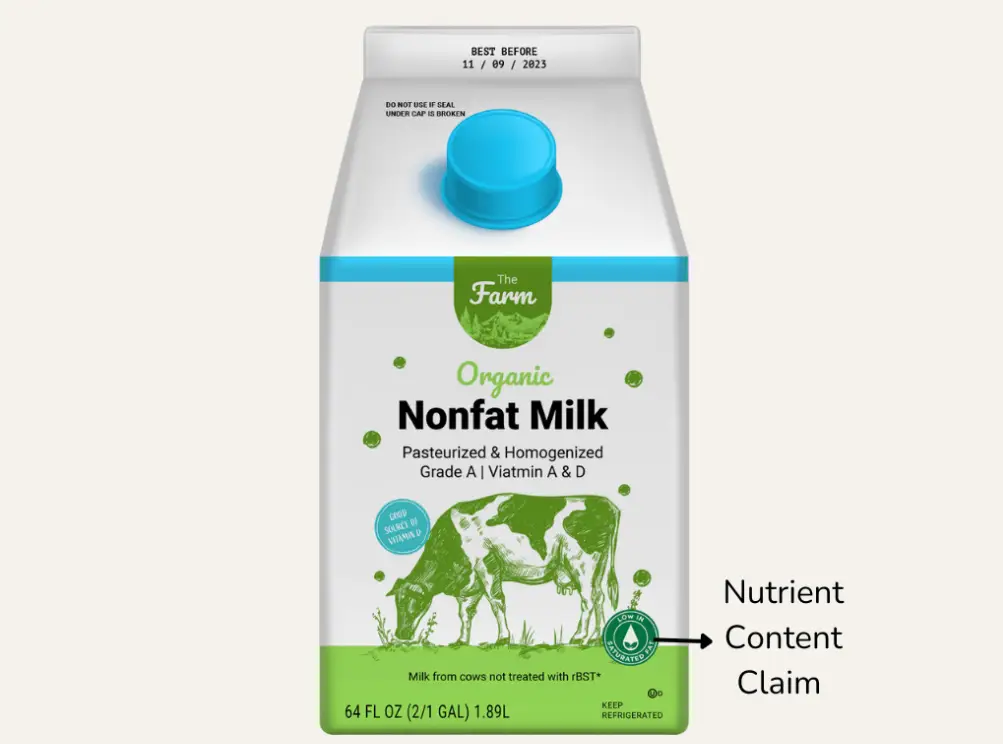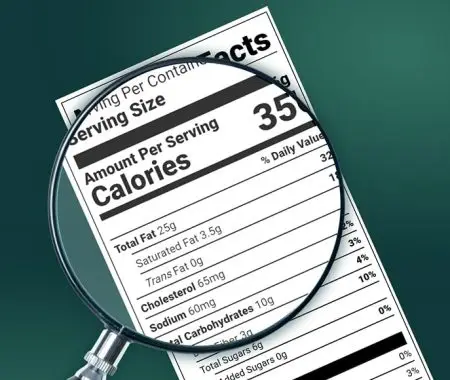The clarity and accuracy of product labeling are vital in the Food and Beverage Industry and the Information Panel plays a vital role in conveying essential product information to consumers. The Food and Drug Administration (FDA) stands at the forefront of ensuring that food labels are accurate and comprehensive, providing consumers with the information they need to make informed choices about what they consume. This article delves into the intricacies of the FDA Information Panel, guiding you through its components, location, and mandatory elements, establishing that your product labels meet the stringent standards set by the FDA to instill confidence in your customers.
TLDR
- The Information Panel is essential for expressing product information in the Food and Beverage Industry.
- The FDA ensures food labels are accurate, providing necessary consumer information.
- The Information Panel contains mandatory elements like Nutrition Facts, ingredient lists, allergen information, and manufacturer details.
- Certain foods are exempt from having a nutrition label, such as fresh produce, small business products, and single-ingredient meats.
- The Nutrition Facts label includes vital nutritional data, with recent updates emphasizing calories, serving sizes, and added sugars.
- Ingredients must be listed in order of weight, with allergens clearly identified.
- Serving sizes must reflect typical consumption, not recommended amounts.
- Voluntary additions to labels can include health claims, nutrient content claims, and structure/function claims.
- Food Label Maker is a resource for ensuring labels meet FDA standards, aiding in consumer trust and regulatory compliance.
Components of the FDA Information Panel:
What is the Information Panel?
The Information Panel is a specific section on a food product’s packaging, designated for providing consumers with vital information about the product. It is a space where manufacturers can communicate important details about the product’s contents, nutritional value, and other essential information, ensuring transparency and aiding consumers in making well-informed purchasing decisions.
Where is the Information Panel Located?
The Information Panel is typically found on the side or back of a product’s packaging, adjacent to the Principal Display Panel (PDP). The PDP is the part of the package most likely to be seen by consumers at the time of purchase, often featuring the product’s name and branding. The Information Panel’s placement ensures that it is easily accessible to consumers, allowing them to quickly find and review the product information.
Mandatory Elements of the Information Panel
The FDA mandates that certain elements must be included on the Information Panel to ensure comprehensive and accurate product labeling. These mandatory elements include:
- Nutrition Facts: This section provides detailed information about the product’s nutritional content, including calories, macronutrients, and certain micronutrients. The FDA has specific guidelines on how this information should be formatted and presented to ensure consistency and ease of understanding.
- Ingredient List: All ingredients used in the product must be listed in descending order of predominance by weight. This not only informs consumers about what is in the product but also helps those with allergies or dietary restrictions to avoid certain ingredients.
- Allergen Information: The FDA requires that any major food allergens present in the product be clearly stated. This is crucial for the safety of consumers who may have allergies to specific ingredients.
- Name and Address of the Manufacturer, Packer, or Distributor: This information provides consumers with a way to identify the company responsible for making the product, should they have any questions or concerns.
- Net Quantity of Contents: This indicates the amount of product in the package excluding the weight of the package itself, measured in metric grams, milliliters, etc., and U.S. customary units (ounces, pounds, etc).
By ensuring that these mandatory elements are accurately and clearly presented on the Information Panel, manufacturers uphold the FDA’s standards for food labeling, contribute to consumer education, and promote trust in their products.
Foods Excluded From Having A Food Label
Certain food items are exempt from bearing a nutrition label according to FDA regulations. Here’s a list of some of these exceptions:
- Fresh fruits and vegetables sold in their raw form.
- Food products produced by small businesses (specific criteria apply).
- Formula for infants or food for children up to 4 years old (have modified labeling requirements).
- Foods with negligible nutrient levels that are not required on a nutrition panel, such as coffee beans, tea leaves, spices, flavor extracts, and food colorings.
- Single-ingredient meat products that are packaged and fall under FDA regulation, including deer, rabbit, quail, wild turkey, and ostrich.
- Foods with packaging that has a surface area of less than 12 square inches, with certain stipulations for providing the required information upon request.
- Dietary supplements, which have their own set of labeling requirements.
- Foods that are prepared inside a retail establishment and only sold in that establishment (i.e. foods processed and sold onsite by independent delis, bakeries, or salad bars)
- Food products that are not for sale to consumers, such as those for restaurants or cafeterias.
- Foods shipped in bulk, as long as they are not distributed directly to consumers that will add food labels on to them.
- Alcoholic beverages, which are regulated by the Alcohol and Tobacco Tax and Trade Bureau (TTB), not the FDA.
See How FoodLabelMaker Can Help You
Nutritional Facts and Its Significance

Understanding the Nutrition Facts label is crucial for consumers to make informed food choices that contribute to a healthy diet. The FDA has designed this label to provide information about the nutritional value of food products, helping consumers to compare foods and choose those that fit into a healthy dietary pattern.
Fat
The total fat, saturated fat, and trans fat content must be listed on the Nutrition Facts label. Fats are important for our bodies, but too much of certain types of fat can contribute to health issues like heart disease.
- Total Fat: This number includes all types of fats contained in the product.
- Saturated Fat: Often found in animal products and some oils, saturated fats are linked to heart disease and should be limited.
- Trans Fat: Trans fats are created in an industrial process that adds hydrogen to liquid vegetable oils to make them more solid. They are associated with an increased risk of heart disease and should be avoided as much as possible.
Sugar
Sugars are carbohydrates that provide energy for the body, but excessive sugar intake can lead to health problems such as weight gain and dental cavities.
- Total Sugars: Includes all sugars present in the food, both naturally occurring and added.
- Added Sugars: The FDA now requires that added sugars be listed separately on the label to help consumers understand how much sugar has been added to the product.
Sodium
Sodium is an essential nutrient but consuming too much sodium can lead to high blood pressure, a risk factor for heart disease and stroke.
Sodium: The label must indicate the total amount of sodium per serving. The FDA recommends that individuals consume less than 2,300 milligrams per day.
Other Required Information
Other nutrients that must be included on the label are dietary fiber, total sugars, added sugars, protein, vitamin D, calcium, iron, and potassium. These nutrients can play a vital role in health and wellness.
Recent Updates and Their Implications
The FDA has made several updates to the Nutrition Facts label to reflect new scientific information, including the link between diet and chronic diseases. These changes include:
- Larger font for “Calories,” “servings per container,” and “Serving size” to emphasize this information.
- Updated serving sizes to better reflect the amounts of food people actually eat.
- New listing for added sugars, both in grams and as a percent Daily Value (%DV).
- Changes in the nutrients that are required to be listed. For example, vitamin D and potassium are now required on the label, reflecting their importance in the diet, while vitamins A and C are no longer required but can be included voluntarily.
By understanding these components of the Nutrition Facts label, consumers can make better dietary choices. For food manufacturers, compliance with these labeling requirements is not just a legal obligation but also a way to assist consumers in making healthier choices.
Ingredients List: Order and Allergens

The FDA mandates that ingredients in a food product be listed in descending order of predominance by weight. This means that the ingredient that weighs the most is listed first, and the ingredient that weighs the least is listed last. This order helps consumers understand the proportion of each ingredient in the product.
Special considerations are given to allergens. The Food Allergen Labeling and Consumer Protection Act requires that food labels clearly identify if the product contains any of the eight major food allergens: milk, eggs, fish, shellfish, tree nuts, peanuts, wheat, and soybeans.
Serving Size and Servings Per Container
The FDA provides specific guidelines for determining the serving size of food products. These guidelines are based on the amounts of food that people typically eat, which are not necessarily the recommended amounts to consume. The serving size influences the number of servings per container, and both must be clearly stated on the food label.
Consistency and clarity in serving size information are important to help consumers compare similar products and clearly see the relevant information to make the best dietary choices. This step-by-step guide on How to Determine Serving Size on FDA Nutrition Labels will help you accurately calculate and display serving sizes.
Other Mandatory Declarations:
When it comes to the information panel on food labels, the FDA requires several mandatory declarations to ensure consumers have access to essential nutritional information. These include:
- Total Calories: This indicates the amount of energy provided by a serving of the food.
- Calories from Fat: Although this is no longer required on the updated Nutrition Facts label, it was previously used to show how many calories in a serving came from fat.
- Total Fat: This includes all types of fat present in the food, such as saturated fat and trans fat.
Voluntary Additions to the Information Panel

Beyond the mandatory elements, brands may choose to include additional nutritional information or health-related claims on their labels. The FDA regulates these voluntary additions to ensure they are not misleading and are based on scientific evidence. Some of the voluntary additions include:
- Health Claims: These are statements that link a food or a food component with a reduced risk of a disease or health-related condition. For example, “may reduce the risk of heart disease.”
- Nutrient Content Claims: These describe the level of a nutrient in the product, using terms like “low fat” or “high in fiber.”
- Structure/Function Claims: These describe the role of a nutrient or dietary ingredient intended to affect the normal structure or function of the human body, for instance, “calcium builds strong bones.”
Conclusion
In wrapping up our guide on navigating the complexities of the FDA Information Panel for food and beverage labeling, it’s clear that compliance is key to both consumer safety and brand credibility. Food Label Maker is a vital tool in this landscape, offering tailored support to ensure your nutrition facts labels meet FDA regulations. Presenting accurate information and maintaining regulatory compliance on your information panel allows you to focus on what you do best – creating great food products.



